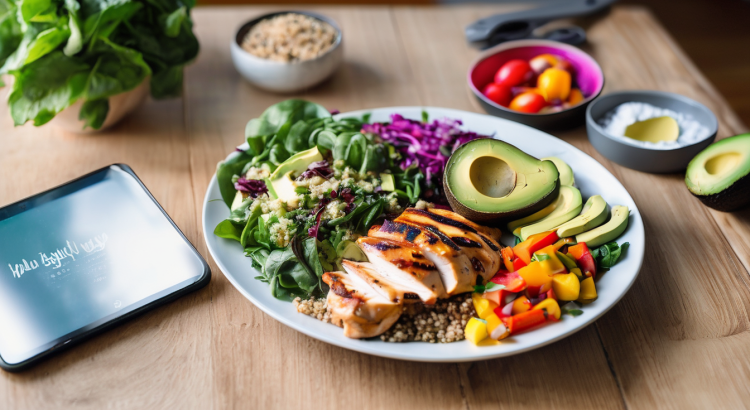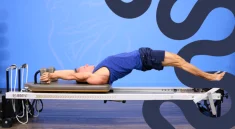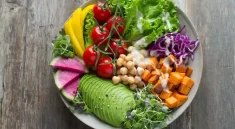Pilates Pila – Strength, Balance, Wellness explains how a well-planned pilates post workout meal can turn every reformer or mat session into better strength, faster recovery, and more stable energy throughout the day.
Why Your Pilates Recovery Meal Matters
Pilates looks gentle, but reformer and mat sessions still create micro-tears in your muscles. Your body needs fuel to repair those fibers and rebuild them stronger. Without a proper pilates post workout meal, you risk slower recovery, nagging soreness, and plateaus in strength.
During class, your body taps into stored glycogen, especially in your core and glutes. After that, your muscles become like a sponge, ready to absorb nutrients. Therefore, what you eat in the first 1–2 hours after finishing can decide how well you bounce back for your next workout.
Unlike heavy lifting, Pilates emphasizes controlled, precise movements and deep core activation. However, the nutrition principles remain similar. You still need quality protein to repair tissues, carbohydrates to refill glycogen, and healthy fats plus micronutrients to keep inflammation in check.
The Ideal Macro Balance For Pilates Recovery
Think of your pilates post workout meal as a balanced plate instead of an exact number of grams. This keeps planning simple and practical, especially when you are busy.
Protein: Rebuild And Repair
Aim for 20–30 grams of high-quality protein after most sessions. This amount helps stimulate muscle protein synthesis without feeling too heavy. Good options include:
- Grilled chicken breast or turkey slices
- Eggs or egg whites, boiled or scrambled
- Greek yogurt or skyr
- Tofu, tempeh, or edamame for plant-based plates
- Fish such as salmon, tuna, or white fish
Building a thoughtful pilates post workout meal with enough protein supports long, lean strength rather than bulk. In addition, it helps reduce muscle soreness and keeps you full longer.
Carbohydrates: Refill Your Glycogen
Pilates sessions can be deceptively demanding on your energy stores. Carbs are necessary to refill glycogen, especially if you train several times a week. A simple guideline is to dedicate about one-third to half of your plate to smart carbohydrates:
- Whole grains like quinoa, brown rice, or farro
- Starchy veggies such as sweet potatoes or squash
- Fruit like berries, banana, or orange segments
- High-fiber options such as oats or whole grain bread
Choosing complex carbs instead of sugary snacks keeps your blood sugar more stable. As a result, your pilates post workout meal supports sustained energy instead of a quick spike and crash.
Healthy Fats: Support Hormones And Satiety
Healthy fats do not need to dominate your plate, but they should be present. They help you absorb fat-soluble vitamins, regulate hormones, and maintain satisfaction after eating. Try adding:
- Avocado slices or guacamole
- Olive oil or avocado oil for roasting and dressing
- Nuts and seeds, such as almonds, chia, or pumpkin seeds
- Fatty fish like salmon, providing beneficial omega-3s
When your pilates post workout meal includes healthy fats in moderation, you are less likely to crave ultra-processed snacks later.
Timing Your Pilates Post Workout Meal
The “anabolic window” is more flexible than once believed. Nevertheless, aiming to eat within 1–2 hours after Pilates remains helpful, especially if you trained intensely or fasted before class.
If you cannot have a full plate right away, start with a small snack containing both protein and carbs. After that, have a more complete pilates post workout meal when you can sit down properly. For instance, you might sip a protein smoothie with fruit after class, then enjoy a full lunch an hour later.
Hydration And Electrolytes After Pilates
Reformer and mat Pilates often look calm, but sweating still depletes water and electrolytes, particularly in heated studios or longer classes. Water should be your base, although you can include:
- Electrolyte tablets without excessive sugar
- Coconut water in moderate portions
- Herbal teas served iced, such as mint or ginger
Proper hydration enhances every pilates post workout meal by supporting digestion and nutrient absorption. Meanwhile, adequate fluids help reduce cramps and tension, especially in your calves, feet, and hip flexors.
Sample Plates For Reformer And Mat Sessions
Different class formats may call for slightly different emphasis on your plate. Still, the core idea of a balanced pilates post workout meal stays consistent: protein, carbs, healthy fats, and colorful plants.
After A High-Intensity Reformer Session
Reformer sessions with springs, jumps, and athletic sequences can feel close to strength training. For these, lean into a bit more carbs and protein:
- Grilled chicken or tofu over quinoa with roasted sweet potatoes
- A large handful of mixed greens, cherry tomatoes, and cucumber
- Olive oil and lemon dressing, plus avocado slices
Here, your pilates post workout meal supports muscle recovery and replenishes more glycogen, preparing you for tomorrow’s training.
After A Gentle Mat Or Mobility Class
Gentler mat Pilates, stretching, or restorative sessions may not burn as many calories. On the other hand, they still activate deep stabilizing muscles. In that case, choose a slightly lighter plate, but keep the same structure:
- Two boiled eggs or a small serving of Greek yogurt
- One slice of whole grain toast or a small bowl of oats
- Berries or sliced fruit on the side
- A sprinkle of nuts or seeds
This style of pilates post workout meal avoids overeating while still nudging your muscles to repair and adapt.
Read More: How to time protein and carbs for effective muscle recovery
Easy Grab-And-Go Options When You Are Busy
Busy schedules often push people toward skipping recovery nutrition entirely. However, even a simple, portable pilates post workout meal helps a lot. Consider these ideas:
- Protein shake blended with banana and oats
- Cottage cheese with pineapple and a handful of walnuts
- Hummus with whole grain crackers and veggie sticks
- Turkey, cheese, and avocado wrap in a whole grain tortilla
Preparing ingredients ahead on weekends can turn your future pilates post workout meal into a quick assemble job instead of full cooking.
Special Considerations: Plant-Based, Morning, And Evening Classes
Plant-Based Pilates Practitioners
A fully plant-based pilates post workout meal can still hit all your needs. Focus on:
- Legumes like lentils, chickpeas, and black beans
- Soy foods such as tofu, tempeh, and edamame
- Whole grains like quinoa or buckwheat
- Nuts, seeds, and fortified plant milks
Pairing different plant proteins throughout the day helps you reach the amino acids required for robust recovery.
Early Morning Classes
When you train before breakfast, your pilates post workout meal may double as your first main meal of the day. Include:
- A solid protein portion like eggs, yogurt, or tofu scramble
- Whole grains, such as oats or whole grain toast
- Fruit for quick yet nutrient-rich carbs
In addition, sip water before, during, and after class to prevent headaches and fatigue.
Evening Classes
For late-night sessions, people often worry about eating too close to bedtime. Nevertheless, a small, balanced plate is better than going to bed under-fueled. Try a lighter pilates post workout meal such as:
- Grilled fish with steamed vegetables and a small serving of rice
- Greek yogurt with berries and a sprinkle of granola
- A tofu veggie stir-fry with a modest portion of noodles
Putting Your Pilates Plate Into Daily Practice
Ultimately, consistency matters more than perfection. Choose a simple framework that you can keep using. One easy rule is to treat every pilates post workout meal as three equal sections: one third protein, one third smart carbs, and one third colorful vegetables, with a thumb-sized serving of healthy fats.
You can even bookmark your favorite combinations and rotate them through the week. As your routine takes shape, your pilates post workout meal becomes a habit, not a chore. Over time, you will likely notice better energy in class, less lingering soreness, and more defined, functional strength supporting you far beyond the studio.



